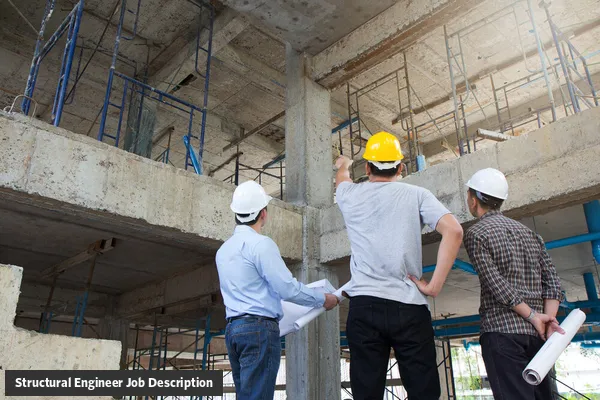Structural Engineer Job Description Template
Use this Structural Engineer job description template to advertise the open roles for free using Longlist.io. You can use this template as a starting point, modify the requirements according the needs of your organization or the client you are hiring for.

Job Brief
We are looking for a structural engineer to oversee our construction projects. You’ll ensure that structures are safe and strong. As a structural engineer, you’ll spend time both in our office – designing and planning project details – and on-site where you’ll provide technical advice to construction workers.
To succeed in this role, you should have hands-on experience using several construction methods and materials and advanced knowledge of AutoCAD. Project management and analytical skills are also very important.
Responsibilities
- Design structures, such as buildings or bridges
- Create structural models by using computer-aided design software
- Measure loads and pressures caused by environmental or human influence
- Follow construction safety guidelines
- Choose appropriate materials based on structural specifications
- Monitor on-site construction processes and supervise construction workers
- Prepare and allocate budgets
- Track and report on project progress
- Collaborate with contractors and project managers
Requirements
- Previous experience as a Structural Engineer or similar field
- Excellent knowledge of construction methods and regulations
- Hands-on experience with AutoCAD
- Data-driven mindset with excellent mathematical skills
- Good communication ability (both written and verbal)
- Attention to detail
- Degree in Structural Engineering; a Master’s degree is a plus
- Member of the Institute of Structural Engineering
What does Structural Engineer do?
A structural engineer is responsible for designing and analyzing the load-bearing structures of buildings, bridges, and other infrastructure projects to ensure their safety and stability. On a day-to-day basis, a structural engineer typically performs the following tasks:
-
Designing structures: Conducting calculations and using computer-aided design (CAD) software to develop detailed plans for structural components, including beams, columns, foundations, and trusses. This involves studying architectural drawings, considering forces and loads, and determining appropriate materials.
-
Analyzing structures: Using mathematical models and structural analysis software to assess the strength, stability, and performance of existing or proposed structures. This involves evaluating the impact of various factors such as wind, earthquakes, and heavy loads.
-
Meeting with clients and architects: Collaborating and consulting with clients, architects, and other professionals working on the project to understand their requirements, provide technical expertise, and ensure that the structural design aligns with the overall project goals.
-
Conducting site visits and inspections: Visiting construction sites to inspect the progress of the project and ensure that the construction is in accordance with the structural design and applicable building codes and regulations. This may involve providing on-site guidance and making necessary adjustments to the design if required.
-
Preparing technical reports and documentation: Documenting design calculations, analysis results, and other relevant information in comprehensive reports. These reports often serve as a record of the structural design and are essential for obtaining permits and approvals.
-
Continuous learning and professional development: Staying updated with the latest industry trends, advancements in structural engineering technologies, and changes in building codes and regulations. This may involve attending seminars, workshops, or pursuing continuing education opportunities.
It's important to note that the exact tasks of a structural engineer can vary depending on the project, level of experience, and the specific field of specialization (such as buildings, bridges, or offshore structures).
